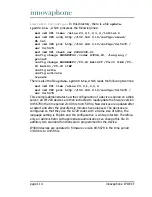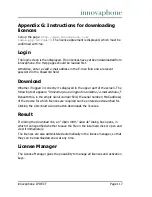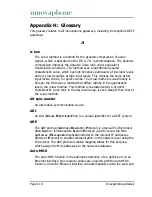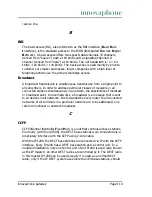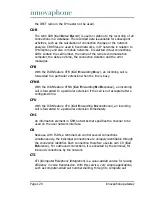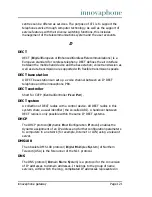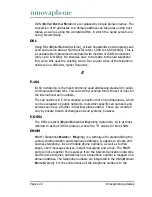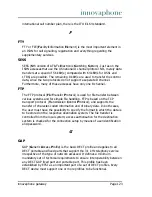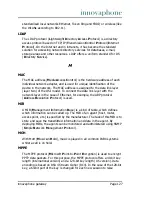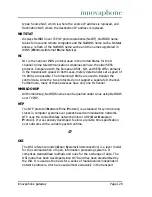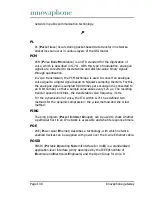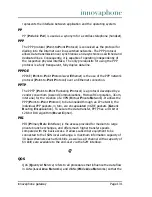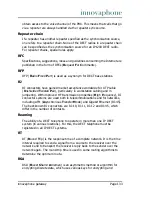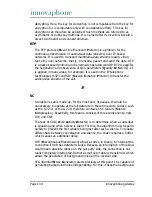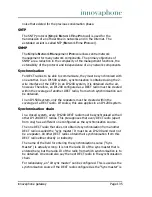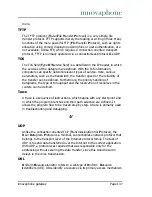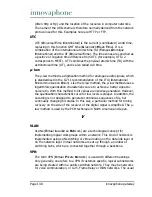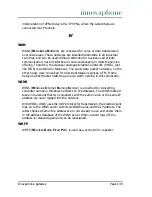
Page 128
innovaphone gateway
security.
MSN
An MSN (
M
ultiple
S
ubsciber
N
umber) is a feature of Euro ISDN. It is a
multiple subscriber number for multi-device access. In an ISDN, any ten free
call numbers (maximum) can be allocated from the call number volume of
the respective access area for the multi-device access. Each terminal can
therefore be assigned an individual call number. An ISDN terminal or a PABX
system can also be assigned several call numbers. On the other hand,
several devices on the passive bus can be connected via one multiple
subscriber number.
MTU
An MTU (
M
aximum
T
ransmission
U
nit) is the largest possible data unit or
frame length that can be transmitted via an existing physical transmission
medium or via a LAN/WAN path. If larger frame lengths occur, they are
either fragmented according to the protocol rules used, or the frame is
discarded. WANs generally have smaller MTU sizes than LANs.
Multicast
Multicast is a mode of transmission from a single point to a group. In
relation to multicast, one also refers to a multipoint connection. The benefit
of multicast is that messages are transferred simultaneously to several
subscribers or closed user groups via one address. As well as the multicast
connection, there is the point-to-point connection and broadcast
transmission.
N
NAT
NAT (
N
etwork
A
ddress
T
ranslation), in computer networks, is a method for
replacing an IP address (
I
nternet
P
rotocol) in a data packet with a different
one. Often this is used to map private IP addresses to public IP addresses. If
the port numbers are also being altered, one refers to masking or PAT (
P
ort
A
ddress
T
ranslation).
Usually, NAT is performed at a transition between two networks. The NAT
service can run on a router or firewall, or on a different specialist device.
Therefore, a NAT device with two network adapters can connect the local
private network with the Internet, for example. NAT is divided into two

